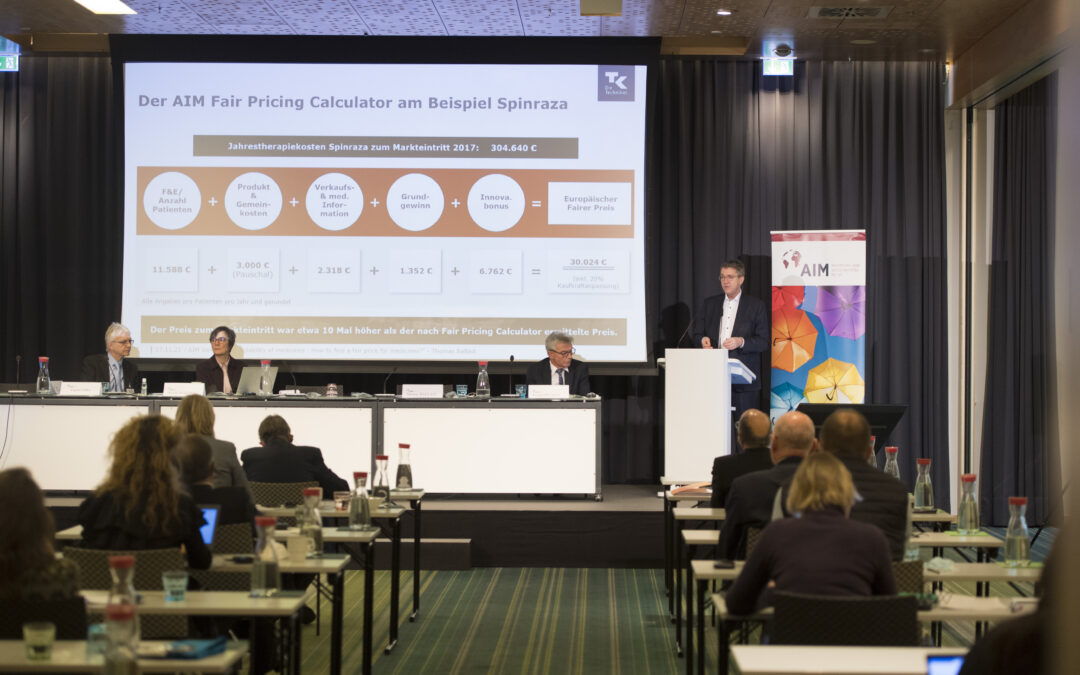“Affordability of medicines – How to find a fair price for medicines?” – Stakeholders discuss the way out of excessive prices at AIM seminar
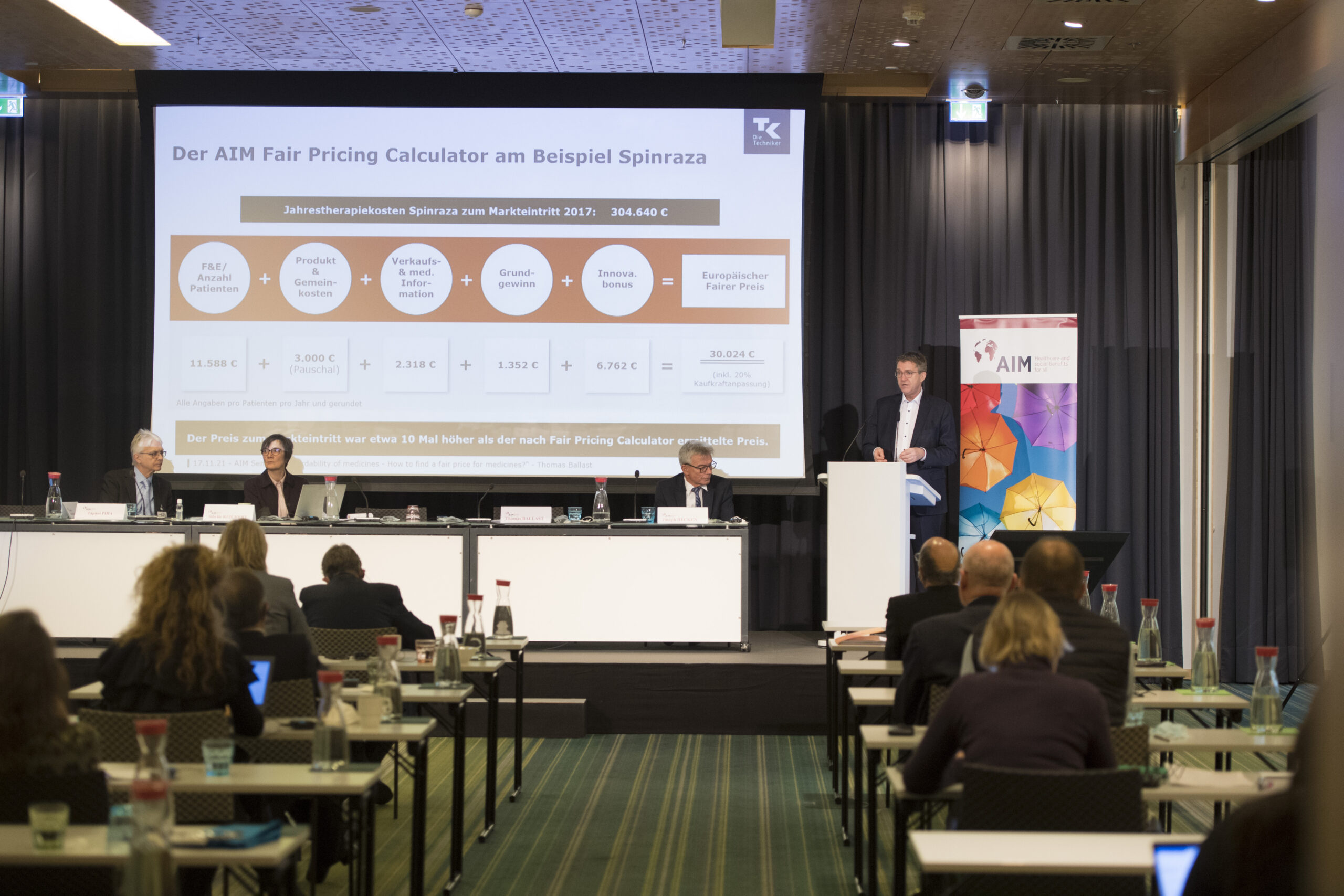
The meeting opened with an intervention from Prof. Josef Hecken, Chairman, Federal Joint Committee (G-BA) and Thomas Ballast, Vice Chairman of the Board of Directors, Techniker Krankenkasse. Prof. Hecken presented the price-building mechanism in Germany and G-BA’s role therein. In Germany, the price-building mechanisms stems from negotiations between health insurers, doctors, patients in the G-BA and the pharmaceutical industry. To Prof. Hecken, challenges now are: combination therapies in cancer, where the last-line therapy sets the bar for the price of the medicines in previous lines; limited data on added therapeutic value of personalised medicine treatments (where conducting randomised clinical studies would be unethical). G-BA is also very active in EUnetHTA’s workstream on methodology, which is essential to make sure that we reach fair methodologies for the assessment of added therapeutic value and to reach fair medicines prices.
Thomas Ballast presented the price-setting landscape in Germany, as well as AIM’s Fair Pricing model. The launch of AIM’s fair pricing calculator in June 2021 led to TK undertaking and publishing a study estimating that using the fair pricing calculator on a basket of 7 medicines could lead to a €13 billion yearly savings in Germany. As a conclusion, due to increasing expenditure, there is a need for action with regard to the pricing of new medicinal products. To Mr Ballast, AIM’s Fair Pricing Calculator brings together economically relevant factors and takes the innovative capacity of a product into account in an appropriate manner. In addition to the substantial savings, the calculator is able to set a new reference value for pricing. For this reason, the AIM model should be taken into account in a reform of pricing according to Mr Ballast.
Two panels then took place. One, gathered Anne Hendrickx (Solidaris), Momir Radulović (Agency for Medicinal Products and Medical Devices of the Republic of Slovenia), Ward Rommel (ECL), Ancel·la Santos Quintano (BEUC) as well as Annabel Seebohm (CPME). They provided a multi stakeholder perspective on the topic of fair pricing. Speakers underlined that the calculator is a relevant tool to show what societies would be ready to pay for new medicines. Speakers asked for more transparency on medicines underlying costs, some recognised that a calculator can be used in the frame of COVID-19 medicines, or as part of joint procurement exercises.
In the second panel, Ulrike Elsner (vdek), Ton van Houten (ZN and Zorg en Zekerheid), Christoph Kilchenmann (santésuisse) and Rain Laane (EHIF) provided the situation in their country with regards to access to medicines, an issue on the table in the frame of the negotiation on the German governmental coalition. Around 20% of the Krankenkassen spending is due to the pharmaceutical sector (€50bn) as we also see increasing prices for new medicines. Ton van Houten underlined the need to collaborate between Member States and use the fair pricing model concretely, ideally to reach a common EU price for all medicines. Rain Laane mentioned the need to restrict the delivery of supplementary protection certificates, the need to rearrange the incentives for orphan medicinal products, the need to have more transparency on costs, as well as the importance of ensuring an adequate supply of medicines during health crises in order to avoid stock-outs. Christoph Kilchenmann gave insights on the Swiss price reduction procedure, which helped reduce the price of medicines in the country.
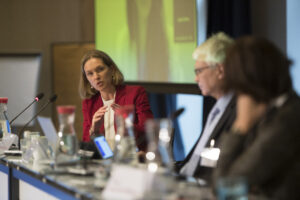
Berlin, 17.11.2021: Sitzung des Vorstands der AIM (Association Internationale de la Mutualité) im Hotel Scandic. Foto: © Jens Jeske/AIM
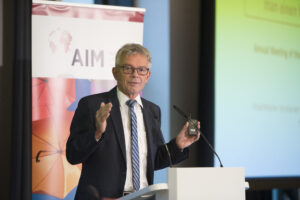
Berlin, 17.11.2021: Sitzung des Vorstands der AIM (Association Internationale de la Mutualité) im Hotel Scandic. Foto: © Jens Jeske/AIM
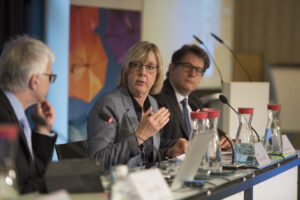
Berlin, 17.11.2021: Sitzung des Vorstands der AIM (Association Internationale de la Mutualité) im Hotel Scandic. Foto: © Jens Jeske/AIM
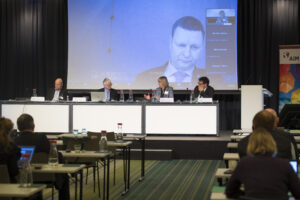
Berlin, 17.11.2021: Sitzung des Vorstands der AIM (Association Internationale de la Mutualité) im Hotel Scandic. Foto: © Jens Jeske/AIM

